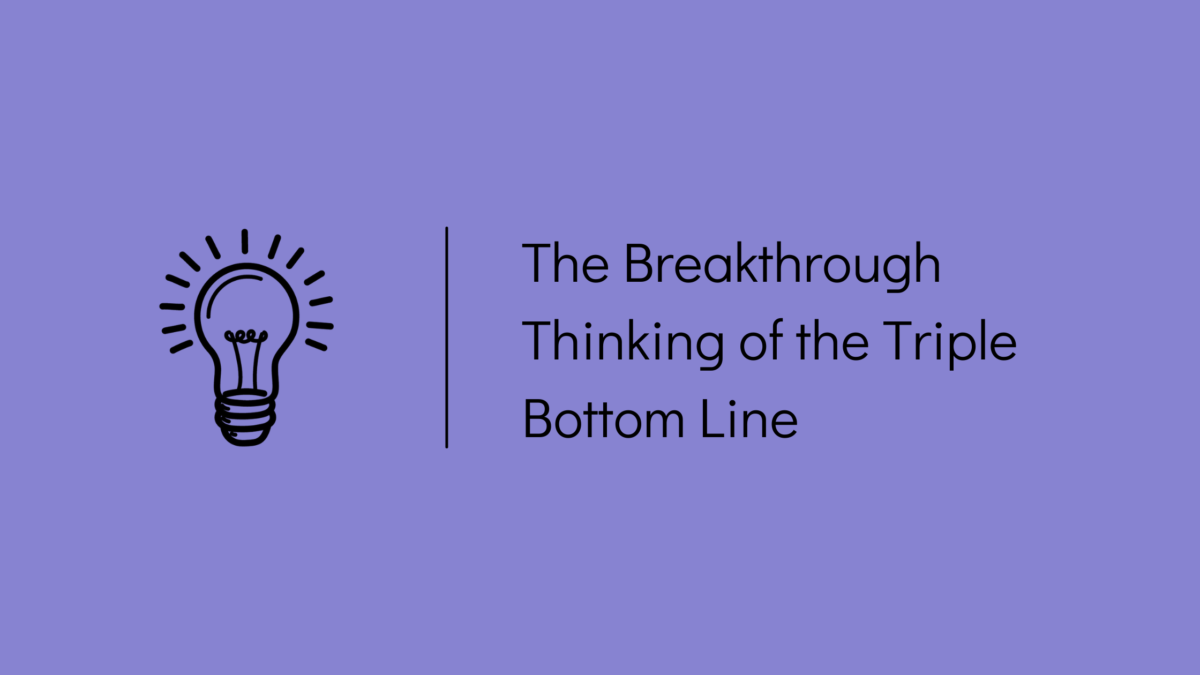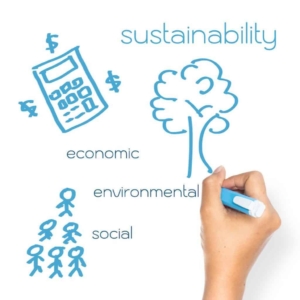
Let’s face it:
Business as we know it has changed drastically in the past few years.
Many businesses, both large and small, have adopted sustainable business practices.
This move towards sustainability has involved the adoption of the triple bottom line.
The triple bottom line shifts the focus of a business so that it’s not just on profits, but on generating profits in a way that is better for both people and the planet.
The Triple Bottom Line: A Definition
To understand the triple bottom line, you need to remember that the “bottom line” refers, literally, to the last line on an income statement that shows the profits made by a business.
Traditionally, the purpose of a business has only been to increase profit, regardless of how it earned those profits.
However, as we’ve seen in recent years, the focus on profits above all else has led to the destruction of natural resources and had devastating effects on people, especially the world’s most vulnerable populations.
Climate change, the financial collapse of 2008-2009, and sweat shops and slave labor demonstrate how much can go wrong when the pursuit of profits takes precedence over all else.
The triple bottom line expands this definition so that that there is not just one bottom line (profit), but there are two more (people and planet).
This new triple bottom line of people, planet, and profit considers the social and environmental impacts of a business in its pursuit of profits. The term was first coined by John Elkington in his 1994 book “Cannibals with Forks.”
The triple bottom line has been recast in several related ways, such as “environment, economy, equity” and “human, natural, financial resources.” (In the case of Cultivating Capital, I prefer to think of it as “human, natural, and financial capital” – I chose the name for my business knowing full well that we need to broaden our thinking of what “capital” means in a business.)
The Business Case for the Triple Bottom Line
Have you met a business professional who actually wants to do harm to people or the planet?
I haven’t.
Most are trying to do their best within a broken system, and as much as possible, they want to minimize their negative environmental impacts and optimize their positive social impacts.
While many professionals are drawn to the triple bottom line and sustainability because it aligns with their values, there is also a strong business case to be made. If there wasn’t, business sustainability as we know it would not be gaining the widespread adoption that it has been getting.
Businesses that work to implement the triple bottom line are recognizing that a business model focused solely on financial profit is inherently unsustainable if it ignores two critical elements necessary to its success: human capital and natural capital.
This approach helps savvy business professionals identify both risks and opportunities that might not be readily apparent when taking a more traditional, one-dimensional perspective of the business.
Consider the following:
- Risk – Relying on the production of cheap products made from fossil fuels that are becoming increasingly scarce or on raw materials that come from an area that will be affected by climate change can both pose problems for a business. What happens when those products cannot be sold as cheaply as they are now? What happens when a raw material that you need for your product is no longer available? A business that looks at how it is dependent upon nature will be more likely to mitigate these risks by looking for more sustainable options – and also operate in a way that will do less harm.
- Opportunity – Tremendous opportunities are available to businesses right now. As we make this shift from an outdated industrial age business paradigm to a sustainable one, businesses have the opportunity to create new products and services and tap new markets.
- Cost savings – There’s a reason why Wal-Mart is the largest single commercial solar generator in the country. Saving resources saves money. This is why energy efficiency and waste reduction are two of the first areas that businesses will work on when they begin thinking about sustainability. One area where a business can also realize cost savings that might not be as readily apparent are when they reduce costs associated with turnover, since many people want to work for a business that aligns with their values and engaging employees is good for business.
- Increased revenue – When a company expands its product line or taps a new market, it generates revenue that would not otherwise be there. When a company builds brand loyalty by authentically letting its customers know that it’s trying to be a responsible business, it increases the lifetime revenue per customer. Both of these strategies can help businesses to be more profitable.
The combination of reducing costs, increasing revenue, mitigating risks and tapping into opportunities make a strong business case for the triple bottom line.
Next Steps
Now that you know about the triple bottom line, review the Small Business Guide to Sustainable Business Practices to help you learn more about business sustainability. In particular, see Chapter 3 on How To Get Started with Sustainability.